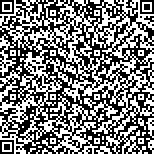|
| 引用本文: | 吕继发,杜欣欣,曲学伟,刘升平.贻贝附着基海带苗种运输技术探究[J].海洋科学,2019,43(6):88-94. |
| |
|
| |
|
|
| 本文已被:浏览 1212次 下载 1185次 |

码上扫一扫! |
|
|
| 贻贝附着基海带苗种运输技术探究 |
|
吕继发1, 杜欣欣1, 曲学伟2, 刘升平1
|
|
1.青岛农业大学海洋科学与工程学院, 山东 青岛 266109;2.烟台市牟平区海洋发展和渔业局, 山东 烟台 264199
|
|
| 摘要: |
| 中介生物辅助大型海藻海底基质附着技术,是采用海面撒播苗种方法,进行大型海藻海底增殖的核心技术。研究发现,该贝、藻复合体苗种的运输比普通水产苗种运输难度显著增加。本文采取传统的干运、水运以及发明的淋水运输3种不同方式,进行了贻贝附着基海带苗种运输技术研究。结果表明:干运3 h内苗种的存活率和生长速度与对照组差异不显著(P>0.05);水运1 h以上苗种的存活率与对照组差异显著(P<0.05);淋水运输24 h内苗种的存活率和生长速度与对照组差异不显著(P>0.05)。实验说明:水运不适合该苗种运输;在露空时间3 h以内,干运是最经济、最便捷的苗种运输方法;在露空24 h以内,采取淋水运输能够保证苗种的成活率,可以作为该苗种常规的运输方法。 |
| 关键词: 海带 增殖 中介生物 苗种 运输 |
| DOI:10.11759/hykx20190304001 |
| 分类号:S981.9 |
| 基金项目:国家级星火计划项目(2015GA740001);农业部948项目(2010-Z25);山东省科技发展计划项目(2013GGB01062);山东省现代农业产业技术体系藻类产业创新团队项目(SDAIT26) |
|
| Investigation of the transport technology of Mytilus edulis and Saccharina japonica |
|
LV Ji-fa1, DU Xin-xin1, QU Xue-wei2, LIU Sheng-ping1
|
|
1.Marine Science and Engineering College, Qingdao Agricultural University, Qingdao, 266109, China;2.Yantai Muping District Marine Development and Fisheries Bureau, Yantai, 264199, China
|
| Abstract: |
| Intermediary bio-assisted sowing and attachment technology, which uses intermediary organisms (shellfish) as a seabed attachment matrix, is a novel method to achieve bottom seeding proliferation of macroalgae. This technique is accomplished by the formation of shellfish-algae community seedlings in a hatchery workshop, transportation of the seedlings, and sowing of seedlings on the open sea. Transportation of the shellfish-algae seedlings has been found to be more difficult than the transportation of shellfish seedlings and algae seedlings separately. This study evaluated the effects of dry transportation, water transportation, and spray water transportation on the growth and survival rates of mussel-kelp (Mytilus edulis-Saccharina japonica) seedlings. Results showed that within 3 h of dry transportation, the survival rate and the growth rate of S. japonica in the mussel-kelp seedlings were not significantly different from those of the control group (P>0.05). However, the survival rate of S. japonica in the mussel-kelp seedlings transported by water for more than 1 h was significantly lower than that of the control group (P<0.05). In spray water transportation within 24 h, there were no significant differences in the survival rate and the growth rate of S. japonica in the mussel-kelp seedlings compared with those of the control group (P>0.05). Therefore, based on this experiment, the following conclusions could be drawn:(i) water transportation is not suitable for the transportation of mussel-kelp seedlings, (ii) dry transportation is the most economical and convenient method for the transportation of mussel-kelp seedlings within 3 h, and (iii) spray water transportation can be used for long-distance transport for up to 24 h. |
| Key words: Saccharina japonica proliferation intermediary organisms mussel-kelp seedling transport |
|
|
|
|
|
|
